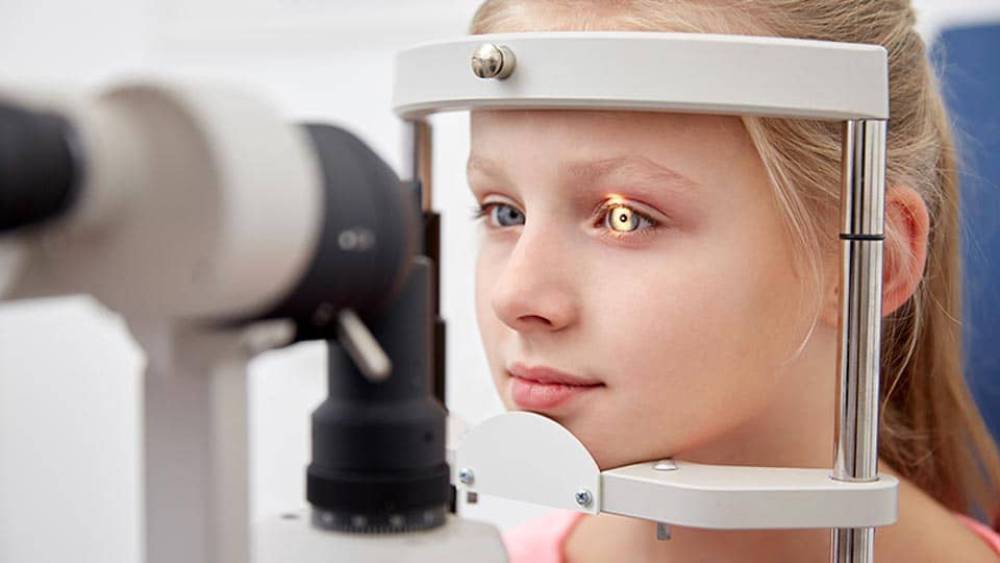
Cataract: Cataract is when the object of the eye loses its transparency due to various reasons and becomes opaque. Most
the most common cause is old age. Like hair graying, eye lenses also lose their transparency with age and lead to vision impairment.
Cataracts cannot be treated with drops, glasses or other means without surgery. Surgical intervention is necessary. With laser sutureless cataract surgery (Phacoemulsification), the lens of the eye, which has lost its transparency, is removed and replaced with an artificial magnifying glass.
Anesthesia is provided only by drops, without an injection or a needle injected into the eye area. In most cases, general anesthesia is not needed. The operation takes an average of 15 minutes.
Complaints such as pain, blurred vision, burning, sinking can be seen after cataract surgery. Especially the tear qualities of patients over 50 years old are insufficient and the pH balance of tears can change after the drugs used after surgery. Patients may complain of burning or stinging for a while due to medication or even after stopping the medication.
Glaucoma (eye pressure): Glaucoma is a disease caused by eye pressure, resulting in damage to the optic nerve and loss of vision cells. In glaucoma, the fluid pressure inside the eye is high enough to damage the optic nerve, which is necessary for vision. If the optic nerve has been damaged, it cannot be repaired.
Most patients with glaucoma do not have any symptoms. However, although it is rare, sometimes symptoms such as pain in and around the eye, blurred vision, nausea, vomiting, and seeing things around objects become colored due to a sudden increase in eye pressure.
Those over 45 years old, those with a family history of glaucoma, those with eye injuries, diabetes, and those who use long-term cortisone drugs face the risk of glaucoma.
Intraocular pressure levels can be lowered with medication. But drugs need to be used for life. Apart from medication, surgery can also be talked about.
Color Blindness: Color blindness, medically known as Daltonism, is usually a congenital disease. The cause of color blindness is the lack of some substances in the eye. As it can be caused by genetic reasons, it can also be caused by some eye diseases such as optic nerve, point of view and eye pressure.
Previously, congenital color blindness could not be treated, only later color blindness could be treated. Congenital color blindness can also be treated with methods that are already in use. In the treatment, the patient's color blindness is determined and a lens is placed in front of the eye according to the type of color blindness.
Lazy Eye: A condition in which one eye is unable to see well enough in early childhood. Because lazy eye can be treated if it is diagnosed at a young age, mothers and fathers should be very careful about this and have their children have an eye examination. After the age of 7, it is difficult to overcome this problem.
Hereditary causes can lead to lazy eye. The lazy eye is treated with the closing treatment. This method is forcing the child to use the lazy eye, which does not use the good eye for certain periods of time.
Scabies: Generally, it can occur as a result of accidents or high fever diseases along with birth.
During birth, if the baby was forced to be removed, if there is a bruise or swelling on the baby's head, the nerves of the muscles that move the eye may be affected by this, and thus a squint may occur.
During the first two to three months of pregnancy, infections of the mother can also play a major role in obesity.
Conjunctivitis: Inflammation of the inner part of the eyelid and the conjunctiva, a transparent layer covering the front surface of the eye, is called conjunctivitis.
This condition can be caused by a virus or bacteria, as well as an allergic reaction or because the tear duct is not fully opened. It manifests itself with symptoms such as redness, itching, crusty eye discharge at night.
Keratoconus: The corneal layer normally has a certain curvature. Keratoconus is a congenital disease in which the cornea droops forward. As a result, astigmatism occurs. The resulting astigmatism can negatively affect the quality of the patient's vision because the eye surface is not symmetrical in the lower and upper quadrants and cannot be fully corrected with glasses and contact lenses.
Uveitis: Inflammation of the middle layer of the eye, the iris and the adjacent tissues known as the ciliary. It is manifested by symptoms such as sensitivity to light, redness in the eye, pain and decreased vision.
The above text is prepared for news and information purposes, it does not replace the doctor's application diagnosis and treatment. A healthcare professional's appointment and approval must be obtained before starting any treatment period.

